How to Preserve and Showcase Your Ceramics Collection
Welcome to the world of ceramics, where each piece tells a story, and every glaze reflects a moment in time. Whether you are a seasoned collector or just starting, preserving and showcasing your ceramics is not just about protecting valuable items; it’s about celebrating artistry and craftsmanship. Imagine walking into a room filled with beautiful, colorful ceramics that not only catch the eye but also evoke emotions and memories. This article provides valuable insights into preserving and displaying ceramic pieces, ensuring their longevity while enhancing their aesthetic appeal in your home or gallery.
Before diving into preservation techniques, it’s crucial to understand the different types of ceramics. From earthenware to porcelain, each material has its unique characteristics and care requirements. For instance, earthenware is more porous and less durable than stoneware, which means it needs a bit more TLC to keep it looking fabulous. Knowing the specific type of ceramic in your collection will help you choose the best preservation techniques. Think of it like caring for different types of pets; each one has its own needs. By understanding these materials, you can ensure that your cherished pieces remain in pristine condition for years to come.
Cleaning your ceramics is essential to maintain their integrity and beauty. However, it’s important to approach this task with care. Harsh chemicals and abrasive scrubbing can damage glazes and finishes, leaving your pieces looking lackluster. Instead, consider using gentle cleaning methods that respect the delicate nature of ceramics. For example, a soft, damp cloth can work wonders for light dust, while a mixture of mild soap and water can help remove stubborn grime. Remember, it’s not just about cleaning; it’s about preserving the story behind each piece.
Using the right tools can make a significant difference in how well you clean your ceramics. Here are some essential tools to have in your cleaning arsenal:
- Soft Brushes: Ideal for getting into crevices without scratching the surface.
- Microfiber Cloths: Perfect for gentle wiping and dusting.
- Mild Cleaning Solutions: Look for eco-friendly options that won’t harm your ceramics.
By investing in these tools, you can ensure that your ceramics remain in top-notch condition, ready to be admired by all.
For those who prefer an eco-friendly approach, there are numerous natural cleaning solutions that are both safe and effective for ceramics. Ingredients like vinegar, baking soda, and lemon juice can be combined to create powerful yet gentle cleaning agents. For example, a paste made from baking soda and water can help lift stains without scratching the surface. Not only will your ceramics sparkle, but you'll also have peace of mind knowing you're using safe products.
Sometimes, despite our best efforts, ceramics may require expert care. If you have valuable or antique pieces, it’s essential to know when to consult a professional conservator. Signs that you should seek help include:
- Visible cracks or chips that need repair.
- Fading colors or glazes that have deteriorated over time.
- Complex cleaning needs that may require specialized knowledge.
When in doubt, it’s always better to err on the side of caution. A professional can help restore your pieces to their former glory, ensuring they continue to tell their stories for generations.
Proper storage is crucial to prevent damage to your ceramics. Imagine a beautiful vase shattered because it was placed too close to the edge of a shelf! To keep your collection safe from chips and cracks, consider the following best practices:
- Store ceramics in a cool, dry place away from direct sunlight.
- Use padded shelves or dividers to prevent pieces from touching.
- Avoid stacking ceramics unless absolutely necessary, and use cushioning material in between.
By following these guidelines, you can ensure that your ceramics remain safe and sound, ready to be displayed whenever you choose.
Now that your ceramics are clean and safely stored, it’s time to showcase them! Displaying your collection can enhance its beauty and allow you to share your passion with others. Think of your display as a stage, where each piece has its moment to shine. Consider creative ways to arrange your ceramics that highlight their unique features while ensuring their safety.
The right display case can protect your ceramics while also highlighting their features. Look for options that balance aesthetics and security. Glass display cases are a popular choice, as they allow for visibility while keeping dust and curious hands at bay. Additionally, consider cases with adjustable shelves, so you can customize the arrangement to fit your collection perfectly.
Lighting plays a vital role in showcasing ceramics. Proper lighting can enhance colors and textures, making your pieces pop! However, be cautious about direct sunlight, which can fade glazes over time. Instead, opt for soft, diffused lighting that creates an inviting atmosphere without causing damage. Think of it like a spotlight on a stage—too harsh, and it overshadows the performance, but just right, and it highlights the beauty of each piece.
Q: How often should I clean my ceramics?
A: It depends on the environment, but a gentle dusting every few weeks and a deeper clean every few months is a good rule of thumb.
Q: Can I use regular household cleaners on my ceramics?
A: Avoid harsh chemicals; instead, opt for mild soap and water or natural cleaning solutions.
Q: What should I do if a ceramic piece gets damaged?
A: If it’s a valuable piece, consider consulting a professional conservator for repairs.
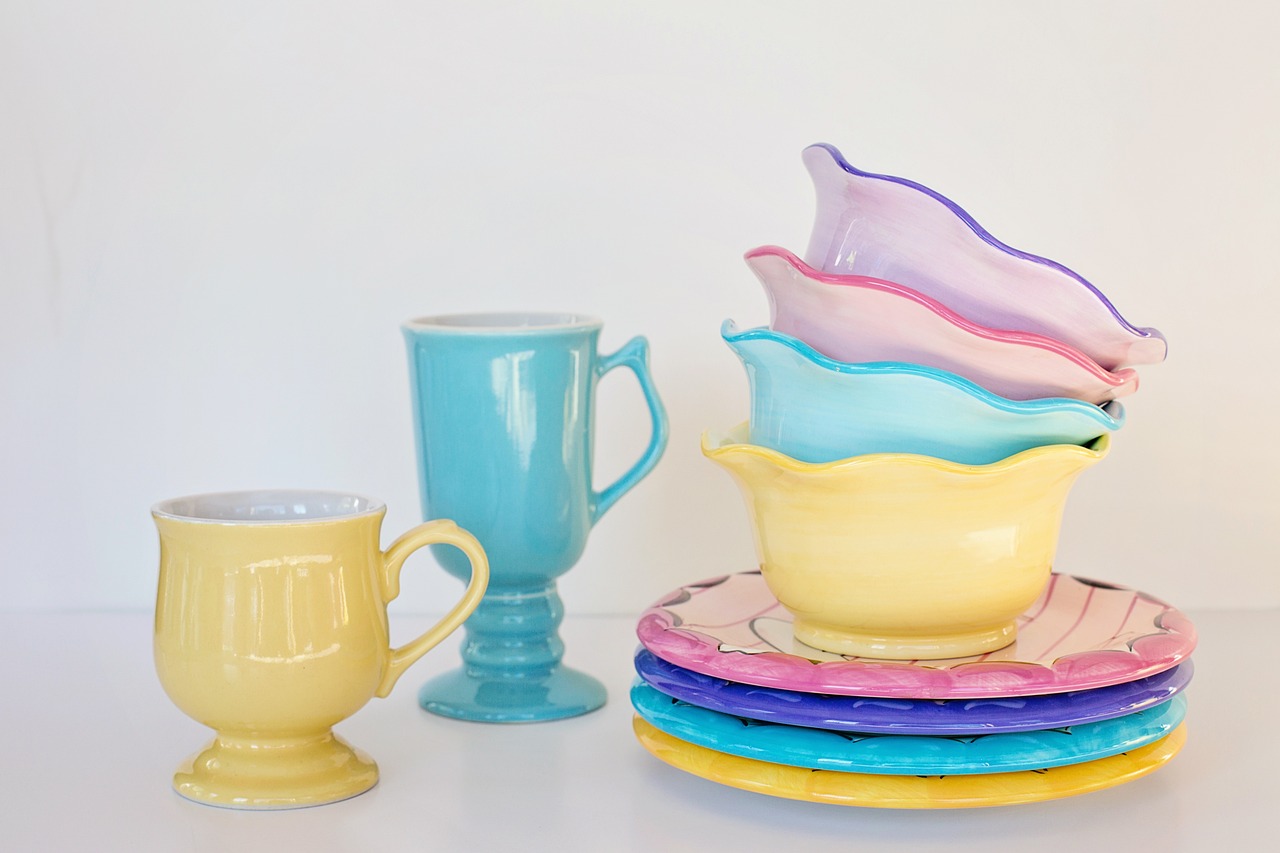
Understanding Ceramic Materials
This article provides valuable insights into preserving and displaying ceramic pieces, ensuring their longevity while enhancing their aesthetic appeal in your home or gallery.
When it comes to ceramics, not all pieces are created equal. Each type of ceramic has its own unique characteristics, which means they require different care methods. Understanding these materials is crucial for anyone looking to maintain the beauty and integrity of their collection. For instance, there are several primary types of ceramics that you might encounter:
- Earthenware: This is the most porous and least durable type of ceramic. It’s often used for decorative pieces and requires careful handling to avoid chips and cracks.
- Stoneware: Known for its strength and durability, stoneware is ideal for functional items like dishes and mugs. It’s less porous than earthenware, making it more resistant to moisture.
- Porcelain: This is a high-fired ceramic that is both delicate and strong. Porcelain pieces are often finer and more expensive, requiring gentle care to prevent scratches and breaks.
- Bone China: A type of porcelain that includes bone ash, bone china is known for its translucency and strength. It’s often used for fine dinnerware and should be handled with care.
Each of these materials has its own ideal storage and cleaning requirements. For example, while stoneware can often withstand a bit more rough handling, porcelain and bone china should be treated with extra caution. Understanding these differences helps you tailor your preservation techniques effectively.
Moreover, the glaze used on ceramics can also affect how you should care for them. Some glazes are more resilient to scratches and stains, while others are more susceptible to damage. Always check the specific instructions for your pieces if available, and when in doubt, opt for gentler cleaning methods.
In summary, knowing the type of ceramic you have is the first step in ensuring its longevity. By familiarizing yourself with the unique qualities and care requirements of each material, you can make informed decisions that will keep your collection looking stunning for years to come.
Proper cleaning is essential to maintain the integrity of your ceramics. Explore gentle cleaning methods that avoid damaging glazes and finishes.
Using the right tools can make a significant difference. Discover the best brushes, cloths, and cleaning solutions for your ceramics.
Learn about eco-friendly cleaning alternatives that are safe for ceramics and effective in removing dirt and grime.
Sometimes, ceramics require expert care. Understand when it's best to consult a professional conservator for your valuable pieces.
Proper storage is crucial to prevent damage. Find out the best practices for storing ceramics to keep them safe from chips and cracks.
Showcasing your ceramics can enhance their beauty. Learn creative ways to display your collection while ensuring its safety.
The right display case can protect your ceramics while highlighting their features. Explore options that balance aesthetics and security.
Lighting plays a vital role in showcasing ceramics. Discover how to use lighting effectively to enhance colors and textures without causing damage.
In this section, we address some common queries regarding the preservation and display of ceramics:
- How often should I clean my ceramics? Ideally, you should clean your ceramics regularly, but be sure to use gentle methods to avoid damage.
- Can I use dish soap to clean my ceramics? Yes, but it's best to dilute it in water and use a soft cloth rather than scrubbing directly.
- What is the best way to store ceramics? Store ceramics in a cool, dry place, preferably in padded containers to prevent chipping.
- Should I display my ceramics in direct sunlight? It's best to avoid direct sunlight, as it can fade colors and damage glazes over time.
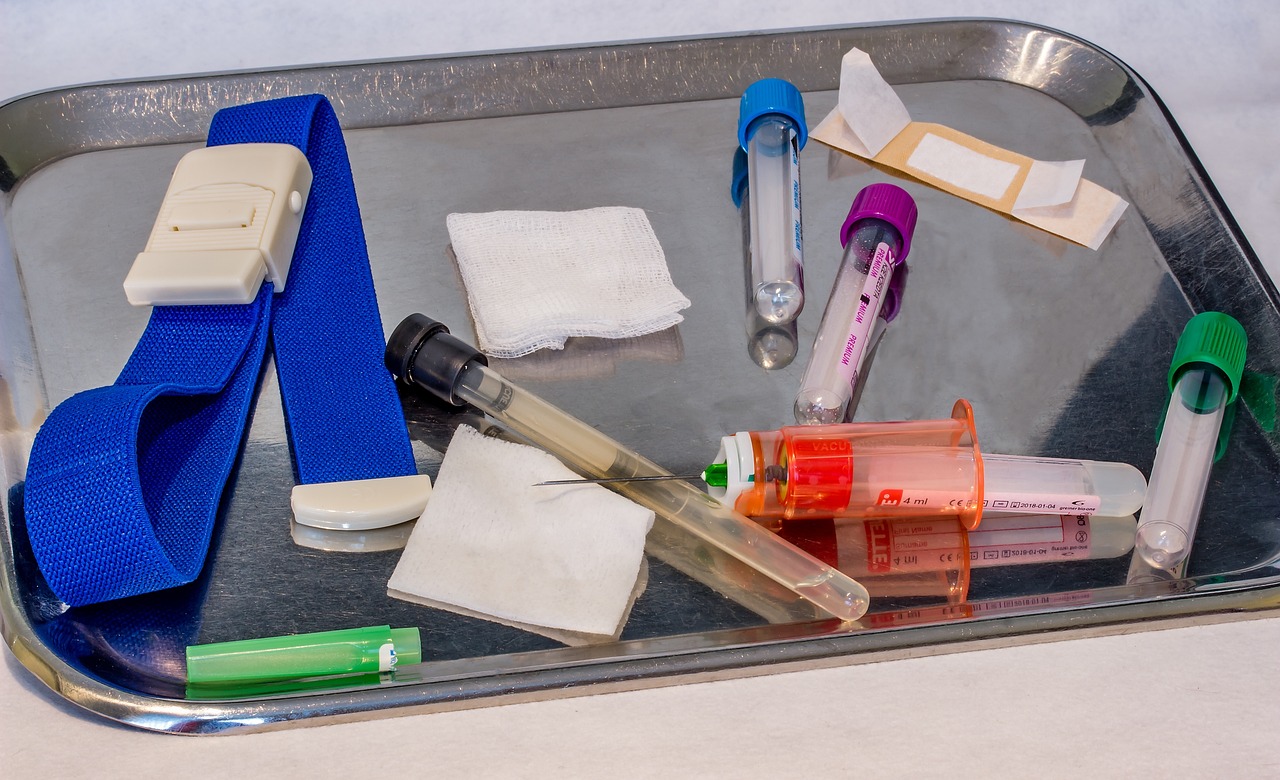
Cleaning Techniques for Ceramics
Keeping your ceramics in top-notch condition requires more than just a quick wipe-down. It's essential to understand that each piece is unique, often crafted from different materials, and may have various finishes that can be easily damaged. Therefore, when it comes to cleaning, **gentleness is key**. You wouldn't want to scrub a delicate vase with a harsh brush, right? Instead, consider using soft, lint-free cloths or sponges that won’t scratch the surface.
One popular method for cleaning ceramics is the use of warm, soapy water. This technique is particularly effective for removing light stains and dust. Simply mix a few drops of mild dish soap with warm water, dip your cloth or sponge into the solution, and gently wipe the surface of your ceramic piece. Remember to rinse with clean water afterward to ensure no soap residue remains, as it can dull the finish over time.
For those stubborn spots, you might need to step it up a notch. A soft-bristled brush can work wonders on intricate designs or textured surfaces. Just make sure to use it with care, applying light pressure to avoid scratching the glaze. If you’re dealing with particularly tough grime, a mixture of baking soda and water can act as a gentle abrasive. Create a paste, apply it to the affected area, and let it sit for a few minutes before gently scrubbing it away. This method is not only effective but also eco-friendly!
Using the right tools can make a significant difference in the cleaning process. Here’s a quick rundown of some essential items you might want to have on hand:
- Soft cloths: Microfiber or lint-free cloths are ideal.
- Soft-bristled brushes: Perfect for reaching into crevices without causing damage.
- Mild dish soap: Essential for everyday cleaning.
- Baking soda: A natural cleaner for tougher stains.
- Distilled water: Helps prevent mineral deposits from tap water.
If you’re looking for eco-friendly alternatives, there are several natural cleaning solutions that are safe for ceramics. For instance, a mixture of vinegar and water can effectively cut through grease and grime. Just mix equal parts of white vinegar and water, apply it to the ceramic, and wipe clean. Not only does this method clean effectively, but it also leaves your ceramics looking fresh without the use of harsh chemicals.
While many cleaning tasks can be handled at home, there are times when it's best to consult a professional conservator. If you possess particularly valuable or antique pieces, or if you notice signs of damage such as cracks or chips, reaching out to an expert can save you from further harm. Professionals have specialized tools and techniques that can restore your ceramics without risking their integrity. Remember, when in doubt, it's always better to be safe than sorry!
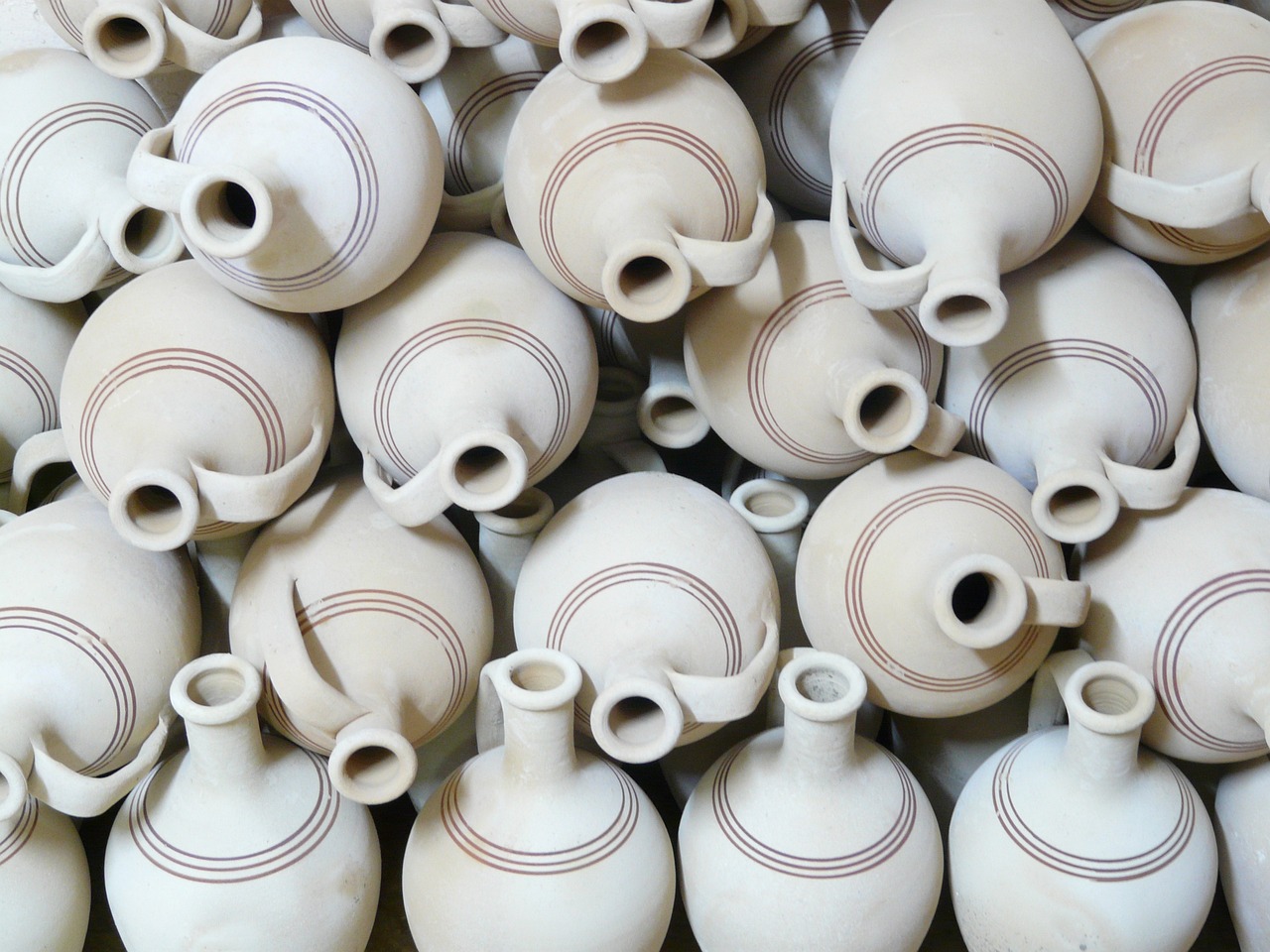
Tools for Effective Cleaning
When it comes to cleaning your cherished ceramic pieces, having the right tools is essential to ensure their longevity and maintain their beauty. Think of cleaning ceramics like caring for a delicate flower; you wouldn’t use a chainsaw to trim the petals, right? Instead, you need precision and gentleness. Here are some indispensable tools that can help you achieve that perfect clean without risking damage to your ceramics.
First and foremost, a soft-bristled brush is your best friend. This tool is perfect for reaching into intricate designs and crevices where dirt and dust like to hide. A brush with natural bristles is ideal, as it is both gentle and effective. You can also use a microfiber cloth for wiping down surfaces. These cloths trap dirt and dust without scratching the glaze, making them an excellent choice for both routine maintenance and deeper cleans.
Another useful tool is a soft sponge. When paired with a gentle cleaning solution, a sponge can help lift grime without scratching the surface of your ceramics. Remember, the key here is to be gentle. If you’re unsure about a specific piece, always test your cleaning method on a less visible area first.
For stubborn stains, a cotton swab can be a game-changer. These little wonders allow you to apply cleaning solutions precisely where they are needed without risking damage to the surrounding areas. You can dip the swab in your cleaning solution and gently work on the stain until it lifts away.
Here’s a handy table summarizing the essential cleaning tools for your ceramics:
| Tool | Purpose |
|---|---|
| Soft-bristled Brush | Reaches into intricate designs and crevices |
| Microfiber Cloth | Wipes down surfaces without scratching |
| Soft Sponge | Lifts grime with gentle cleaning solutions |
| Cotton Swabs | Targets stubborn stains with precision |
Moreover, it’s crucial to choose the right cleaning solution. Avoid harsh chemicals that can erode glazes or finishes. Instead, opt for mild dish soap mixed with warm water or even a vinegar solution for natural cleaning. Always remember to rinse your ceramics with clean water after using any cleaning solution to remove any residue.
In conclusion, the right tools for effective cleaning can make all the difference in preserving the beauty and integrity of your ceramics. By investing in soft brushes, microfiber cloths, and gentle cleaning solutions, you can ensure your collection remains as stunning as the day you acquired it. So, treat your ceramics with the care they deserve, and they will reward you with their beauty for years to come!
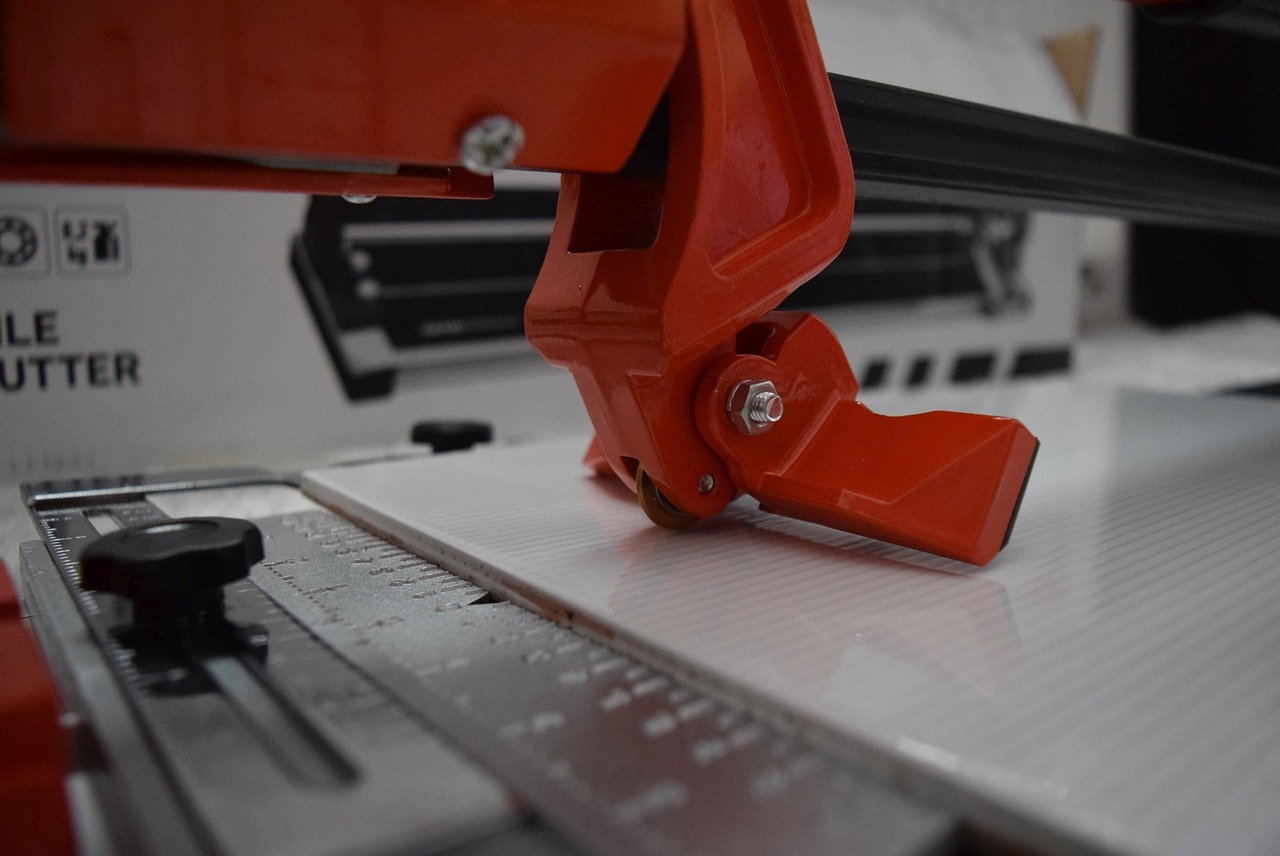
Natural Cleaning Solutions
When it comes to cleaning your cherished ceramics, opting for can be a game-changer. Not only are they eco-friendly, but they also help maintain the integrity of glazes and finishes that make your pieces unique. Think about it: just as you wouldn’t want harsh chemicals to strip the beauty from your skin, your ceramics deserve the same gentle treatment. So, let’s dive into some effective natural cleaning methods that you can easily whip up at home!
One of the most popular natural cleaning agents is a simple mixture of baking soda and water. This dynamic duo creates a mild abrasive that can help lift dirt without scratching the surface of your ceramics. Just mix a few tablespoons of baking soda with water to form a paste, apply it gently with a soft cloth or sponge, and watch the grime disappear! It’s like giving your ceramics a spa day, right?
Another fantastic option is using white vinegar. This household staple not only cuts through grease but also helps to neutralize odors. To use vinegar, mix equal parts of white vinegar and water in a spray bottle. Lightly mist the solution onto your ceramics and wipe them down with a soft cloth. It’s a refreshing way to keep your pieces looking their best without any harmful side effects.
If you’re dealing with tougher stains, consider using olive oil combined with lemon juice. This mixture works wonders on ceramic surfaces, especially those with intricate designs. Just mix a tablespoon of olive oil with half a lemon’s juice, apply it to a soft cloth, and gently rub the stained area. Not only will it help remove stubborn stains, but it will also leave your ceramics looking shiny and new!
For those who prefer a more aromatic experience, essential oils can be a delightful addition to your cleaning routine. A few drops of tea tree oil mixed with water can provide both cleaning power and a refreshing scent. Tea tree oil is known for its antibacterial properties, making it an excellent choice for keeping your ceramics not just clean but also hygienic.
However, it’s important to remember that not all natural solutions are suitable for every type of ceramic. For example, porous ceramics may absorb moisture, which can lead to damage over time. Therefore, always test a small, inconspicuous area before applying any cleaning solution to the entire piece. This precaution can save you from potential heartbreak!
In summary, natural cleaning solutions are not only effective but also gentle on your beloved ceramics. By incorporating items like baking soda, vinegar, olive oil, and essential oils into your cleaning routine, you can ensure that your collection remains stunning and well-preserved. So, the next time you think about cleaning your ceramics, consider reaching for these natural alternatives instead of harsh chemicals. Your ceramics will thank you!
- Can I use dish soap to clean my ceramics? - Yes, but ensure it is mild and rinse thoroughly afterward.
- Are natural cleaning solutions safe for all types of ceramics? - Most natural solutions are safe, but always test a small area first.
- How often should I clean my ceramics? - It depends on usage; generally, a light clean every few months is sufficient.

When to Seek Professional Help
When it comes to preserving your beloved ceramics, there are moments when the DIY approach just doesn’t cut it. You might be wondering, “How do I know when it’s time to call in the experts?” Well, let’s break it down. If you find yourself facing significant damage—like deep cracks, chips, or extensive staining—it's wise to consult a professional conservator. These specialists possess the skills and knowledge necessary to restore your pieces without further compromising their integrity.
Moreover, if your ceramics are of considerable value—either financially or sentimentally—seeking professional help is a no-brainer. Imagine having a family heirloom or a piece from a renowned artist; the last thing you want is to risk irreversible damage. Professionals are equipped with specialized tools and techniques that can address issues beyond the scope of typical household repairs.
Another scenario to consider is when your ceramics have undergone previous repairs that seem questionable. If you notice old glue or poorly executed fixes, it’s time to bring in someone who can assess and potentially redo the work. Trust me, a poorly repaired piece can detract from its beauty and value, making it essential to ensure any restoration is done correctly.
Here’s a quick checklist to help you decide when to seek professional help:
- Visible Damage: Significant cracks, chips, or breaks.
- Value: High-value or sentimental pieces that you cannot afford to lose.
- Previous Repairs: Unsatisfactory or questionable prior repairs.
- Stubborn Stains: Stains that do not respond to gentle cleaning methods.
In conclusion, while it’s fantastic to take pride in caring for your ceramics, sometimes it’s best to let the experts handle the heavy lifting. They can ensure your collection remains a source of joy and pride for years to come, without the worry of causing further damage.

Storing Your Ceramics Safely
When it comes to storing your ceramics, the goal is to create a safe haven for your cherished pieces. Imagine your ceramics as delicate treasures; just like a knight would protect their crown jewels, you need to shield your ceramics from potential harm. Proper storage not only prevents chips and cracks but also ensures that your collection remains as stunning as the day you acquired it.
First and foremost, consider the environment in which you store your ceramics. A stable, climate-controlled space is ideal. Extreme temperatures and humidity can wreak havoc on ceramic materials, leading to cracks or discoloration. A basement or attic might seem like a good idea, but these areas can often be too damp or too dry. Instead, a closet or dedicated cabinet in a room with consistent temperature can work wonders.
Next, think about the surface your ceramics will be resting on. Always opt for a soft, padded surface to prevent any scratches or abrasions. You can use materials like bubble wrap, foam padding, or even soft cloths to create a cushioned layer. For larger pieces, consider using a sturdy box lined with protective material. This added layer of security can make all the difference in keeping your ceramics safe.
When stacking ceramics, be sure to avoid direct contact between pieces. Place a soft cloth or tissue between items to prevent scratching. If you have multiple similar items, consider using a storage container with dividers. This not only keeps them organized but also minimizes the risk of them bumping against each other. If you're unsure about how to stack them, remember: it's always better to err on the side of caution. You’d rather take a little extra time to store them safely than face the heartbreak of a shattered piece.
Another important aspect of safe storage is the location. Keep your ceramics away from high-traffic areas where they could easily be knocked over. A dedicated shelf or cabinet is perfect, but ensure it’s not in direct sunlight, as UV rays can fade colors and degrade glazes over time. You wouldn’t want to leave your favorite book out in the sun all day; similarly, your ceramics deserve the same care.
Lastly, it’s a good idea to regularly check on your stored ceramics. Just as you would periodically check on a plant to ensure it’s thriving, make it a habit to inspect your ceramics for any signs of damage or wear. This proactive approach can help you catch any potential issues before they escalate, allowing you to take action early—whether it’s a gentle cleaning or even consulting a professional conservator.
In summary, safe storage of your ceramics revolves around a few key principles: maintain a stable environment, use soft surfaces, avoid stacking directly, choose a suitable location, and regularly check on your collection. By following these guidelines, you can ensure that your ceramics remain in pristine condition, ready to be showcased whenever you desire.
- What is the best temperature for storing ceramics? Ideally, keep ceramics in a stable environment with temperatures between 60°F and 75°F (15°C to 24°C).
- Can I use regular cleaning products on my ceramics? No, it's best to avoid harsh chemicals. Instead, opt for gentle, eco-friendly cleaning solutions.
- How often should I check on my stored ceramics? Aim for at least once every few months to ensure they remain in good condition.
- Is it safe to store ceramics in the garage? Generally, it's not advisable due to temperature fluctuations and humidity.

Displaying Your Collection
Showcasing your ceramics collection is not just about putting them on a shelf; it's an art form in itself! Think of your ceramics as the stars of a show, each piece telling its own unique story. When displayed thoughtfully, these beautiful artifacts can transform your space, adding character and charm. But how do you ensure that they are both safe and visually appealing? Let’s dive into some creative and practical ways to display your treasured ceramics.
First and foremost, consider the location of your display. A well-lit area, free from direct sunlight, is ideal. Sunlight can fade vibrant glazes and cause cracks over time. So, where should you put them? A corner shelf or a dedicated display cabinet can be perfect. A cabinet not only protects your ceramics from dust and accidental bumps but also allows you to curate your collection in a way that tells a story. Imagine a beautifully arranged cabinet, with each shelf showcasing a different theme or color palette—simply stunning!
Next, let’s talk about display cases. Choosing the right display case is crucial. You want something that highlights the beauty of your ceramics while providing adequate protection. Here are some options to consider:
- Glass Display Cabinets: These are fantastic for showcasing your collection while keeping them safe from dust and damage. Look for cabinets with adjustable shelves to accommodate various sizes.
- Open Shelving: If you prefer an airy feel, open shelving can work wonders. Just ensure the shelves are sturdy enough to hold heavier pieces.
- Wall-Mounted Displays: For a unique twist, consider wall-mounted shelves or shadow boxes. They save space and draw the eye upward, making your ceramics a focal point.
Now, let’s not forget about lighting. Proper lighting can elevate your ceramics from ordinary to extraordinary. Soft, diffused lighting works best to enhance colors and textures without causing damage. Avoid harsh overhead lights that can create glare or shadows. Instead, consider using spotlights or LED strips that can be adjusted to highlight specific pieces. Imagine walking into a room where your ceramics are bathed in a warm glow, inviting everyone to admire their beauty!
Moreover, think about the arrangement of your pieces. Grouping ceramics by size, color, or theme can create a visually appealing display. For instance, larger pieces can serve as anchor points, while smaller items can fill in around them. This not only helps create balance but also draws the eye across the entire collection. Don’t be afraid to play around with different arrangements until you find what feels right!
Finally, remember that displaying ceramics is also about personal expression. Your collection reflects your unique taste and style, so don’t hesitate to get creative. Incorporate other decorative elements like plants, books, or artwork to complement your ceramics. The key is to create a cohesive look that feels inviting and showcases the beauty of each piece.
Q: How can I prevent my ceramics from becoming dusty?
A: Regular dusting with a soft, dry cloth can help keep your ceramics clean. For pieces that are frequently handled, consider using display cases to minimize dust accumulation.
Q: Is it safe to use adhesive putty to secure my ceramics in place?
A: Yes, adhesive putty can be a great way to prevent tipping or falling, especially in homes with pets or children. Just ensure it doesn't damage the ceramics when removed.
Q: How often should I change the display of my ceramics?
A: There's no set rule! Changing your display every few months can keep your space feeling fresh and allow you to enjoy different pieces in your collection.
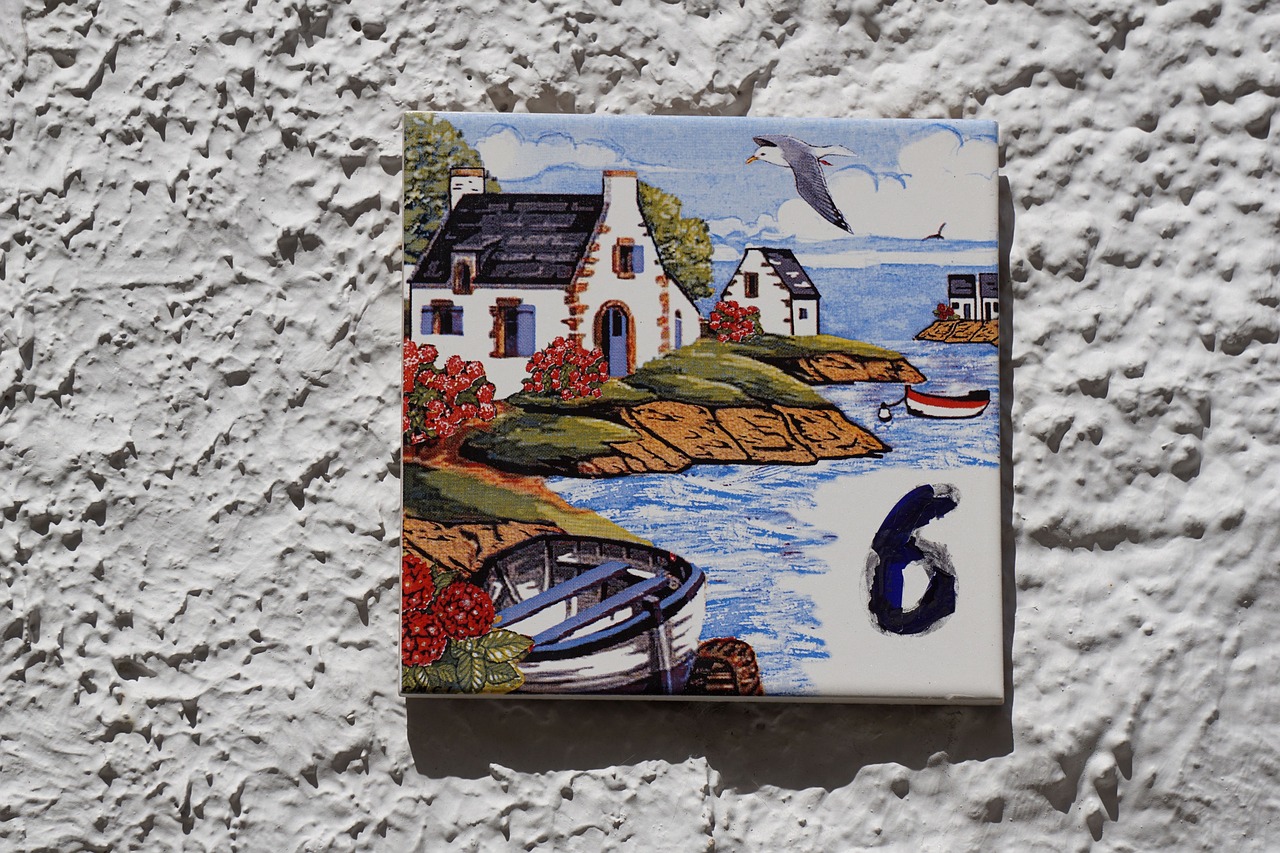
Choosing the Right Display Cases
When it comes to showcasing your ceramics collection, the choice of display cases can make all the difference. Think of your ceramics as stars on a stage; the right case is their spotlight, enhancing their beauty while providing necessary protection. Choosing the perfect display case involves considering several factors, including material, size, and design. You want a case that not only complements your ceramics but also fits seamlessly into your home or gallery decor.
First and foremost, consider the material of the display case. Glass cases are a popular choice because they offer visibility while protecting your ceramics from dust and accidental contact. However, not all glass is created equal. Opt for tempered glass, which is more durable and less likely to shatter. Wooden cases can also be attractive, providing a warm, rustic feel. Just ensure that the wood is treated properly to avoid moisture damage, which can be detrimental to ceramics.
Next, think about the size of your display case. It’s essential to choose a case that accommodates your ceramics without cramming them in. Each piece deserves its own space to shine. Measure your largest piece and ensure the display case has enough height, width, and depth to house it comfortably. A well-sized display case prevents the risk of chips or cracks that can occur when pieces are jostled against one another.
Another consideration is the design of the display case. You want it to enhance the aesthetic appeal of your ceramics rather than detract from it. Clear cases with simple lines often work best, as they allow the beauty of your ceramics to take center stage. If you’re feeling adventurous, you might even consider custom cases that reflect your personal style or the theme of your collection. For instance, a modern, minimalist case can beautifully showcase contemporary ceramics, while a vintage-style case might be perfect for antique pieces.
Don’t forget about lighting inside the display case. Proper illumination can highlight the intricate details and vibrant colors of your ceramics. LED lights are an excellent choice because they emit little heat, reducing the risk of damage to your pieces. Position the lights strategically to create a warm glow that draws attention to your collection without overwhelming it.
Lastly, ensure that your display case has adequate ventilation. Ceramics can be sensitive to humidity, and a sealed case can trap moisture, leading to potential damage over time. Look for cases with built-in ventilation or consider leaving the door slightly ajar to allow air circulation. This simple step can significantly extend the life of your precious ceramics.
In summary, choosing the right display case is about balancing protection with aesthetics. By considering materials, size, design, lighting, and ventilation, you can create a stunning showcase for your ceramics that not only protects them but also enhances their beauty. Remember, your ceramics are not just objects; they are pieces of art that deserve to be displayed with care and creativity.
- What type of display case is best for ceramics? Glass display cases are generally the best choice as they provide visibility and protection. Look for tempered glass for added durability.
- How can I prevent damage to my ceramics in a display case? Ensure the case is the right size, provide adequate ventilation, and avoid overcrowding pieces to prevent chips and cracks.
- Is lighting important for displaying ceramics? Yes, proper lighting can enhance the colors and details of your ceramics. Consider using LED lights for the best results.
- Can I use wooden display cases for ceramics? Absolutely! Just make sure the wood is treated to prevent moisture damage, and choose a design that complements your collection.

Lighting Considerations
When it comes to displaying your ceramics, lighting is a game-changer. It can either make your pieces shine like stars or wash them out completely. Imagine walking into a room where the light dances off the curves of your favorite vase, highlighting its intricate patterns. That's the kind of magic good lighting can create! But hold on—too much light can lead to fading colors and damaged glazes. So, how do you strike the perfect balance?
First, consider the type of lighting you use. Natural light is often the most flattering, but it can be a double-edged sword. While it showcases the true colors of your ceramics, prolonged exposure can cause irreversible damage. If you have a window that bathes your collection in sunlight, you might want to invest in UV-filtering window films or sheer curtains. This way, you can enjoy the natural light without the risk of fading.
On the other hand, artificial lighting can be a safe alternative. LED lights, for example, are a fantastic choice because they emit very little heat and are energy-efficient. They also come in various color temperatures, allowing you to choose a warm glow that complements your ceramics. Just imagine your collection illuminated in soft, warm light, creating an inviting atmosphere that draws everyone in.
Another important factor is the placement of your lights. Spotlights can be used to draw attention to specific pieces, while ambient lighting can create a soft glow throughout the room. A well-placed spotlight can transform an ordinary ceramic bowl into a captivating centerpiece. However, be cautious with the angle—too direct, and you risk creating harsh shadows; too indirect, and your ceramics may appear dull.
To help you visualize the best lighting setup for your ceramics, here's a simple table outlining the pros and cons of different lighting types:
| Lighting Type | Pros | Cons |
|---|---|---|
| Natural Light | Enhances colors; creates a soft ambiance | Can cause fading; difficult to control |
| LED Lights | Energy-efficient; low heat emission; various color options | Can be expensive; some may not mimic natural light |
| Incandescent Lights | Warm glow; good color rendering | High heat output; not energy-efficient |
Finally, don’t forget about the height of your display. The eye naturally gravitates towards the center of a piece, so positioning your ceramics at eye level can enhance their visibility. A well-lit display at the right height can create a stunning focal point in any room.
In summary, lighting is an art form in itself when it comes to showcasing your ceramics. By choosing the right type of light, controlling its intensity, and placing it thoughtfully, you can create an enchanting display that not only protects your collection but also elevates its beauty. So go ahead, play with light and watch your ceramics come to life!
- How can I prevent my ceramics from fading? Consider using UV-filtering films on windows and avoid direct sunlight.
- What type of lighting is best for ceramics? LED lights are ideal as they are energy-efficient and emit little heat.
- Should I use spotlights or ambient lighting? A combination of both can create a balanced and inviting display.
- How high should I place my display? Aim for eye level to create an engaging focal point.
Frequently Asked Questions
- What are the different types of ceramics?
Ceramics can be broadly categorized into earthenware, stoneware, and porcelain. Each type has unique properties and requires specific care methods. For instance, earthenware is more porous and less durable, while porcelain is known for its strength and delicate beauty.
- How should I clean my ceramics?
To clean ceramics, always opt for gentle methods. Use a soft, damp cloth to wipe surfaces and avoid abrasive cleaners that can scratch the glaze. For tougher stains, a mixture of mild soap and water with a soft brush can be effective, but always test on a small area first!
- What tools are best for cleaning ceramics?
When it comes to cleaning ceramics, the right tools make all the difference! Soft-bristled brushes, microfiber cloths, and non-abrasive sponges are ideal. These tools help you maintain the integrity of your pieces without causing damage.
- Are there eco-friendly cleaning solutions for ceramics?
Absolutely! Natural cleaning solutions like vinegar and baking soda are great for cleaning ceramics. They are effective in removing grime without the harsh chemicals found in many commercial cleaners, making them safe for both your ceramics and the environment.
- When should I consult a professional for ceramic care?
If your ceramic pieces are particularly valuable, damaged, or if you’re unsure about the best cleaning methods, it's wise to consult a professional conservator. They have the expertise to restore and preserve your ceramics without risking further damage.
- What are the best practices for storing ceramics?
To store ceramics safely, always use protective padding, like bubble wrap or soft cloths, to prevent chips and scratches. Store them in a cool, dry place, and avoid stacking them directly on top of one another to minimize the risk of breakage.
- How can I display my ceramics effectively?
Displaying ceramics can be a fun way to enhance their beauty! Use display cases that provide protection while allowing visibility. Consider creative arrangements and utilize shelves or cabinets where your pieces can shine without being overcrowded.
- What lighting is best for showcasing ceramics?
When showcasing ceramics, soft, diffused lighting works wonders! Avoid direct sunlight, which can fade colors, and instead use LED lights that highlight the textures and details of your pieces without generating too much heat.



















